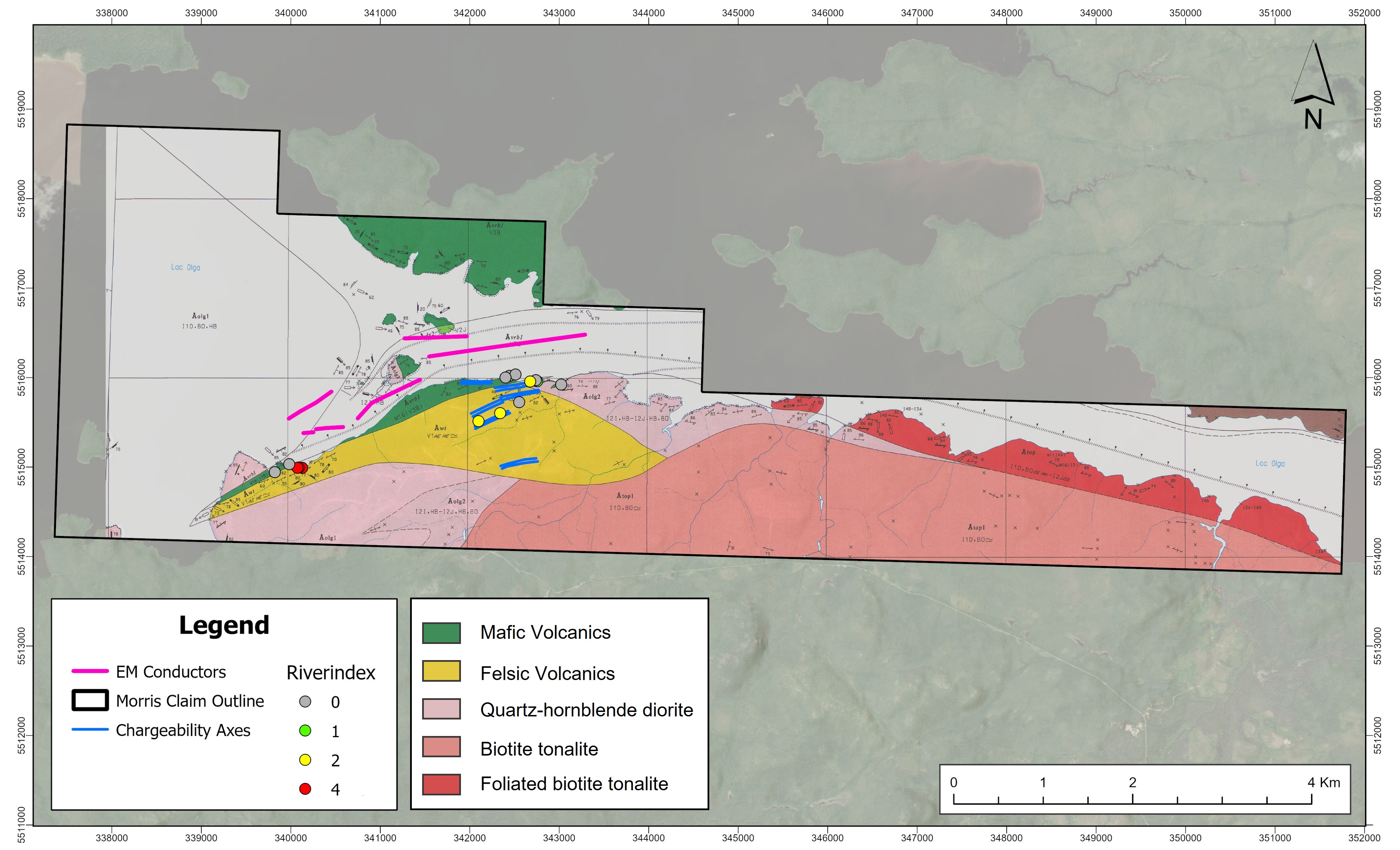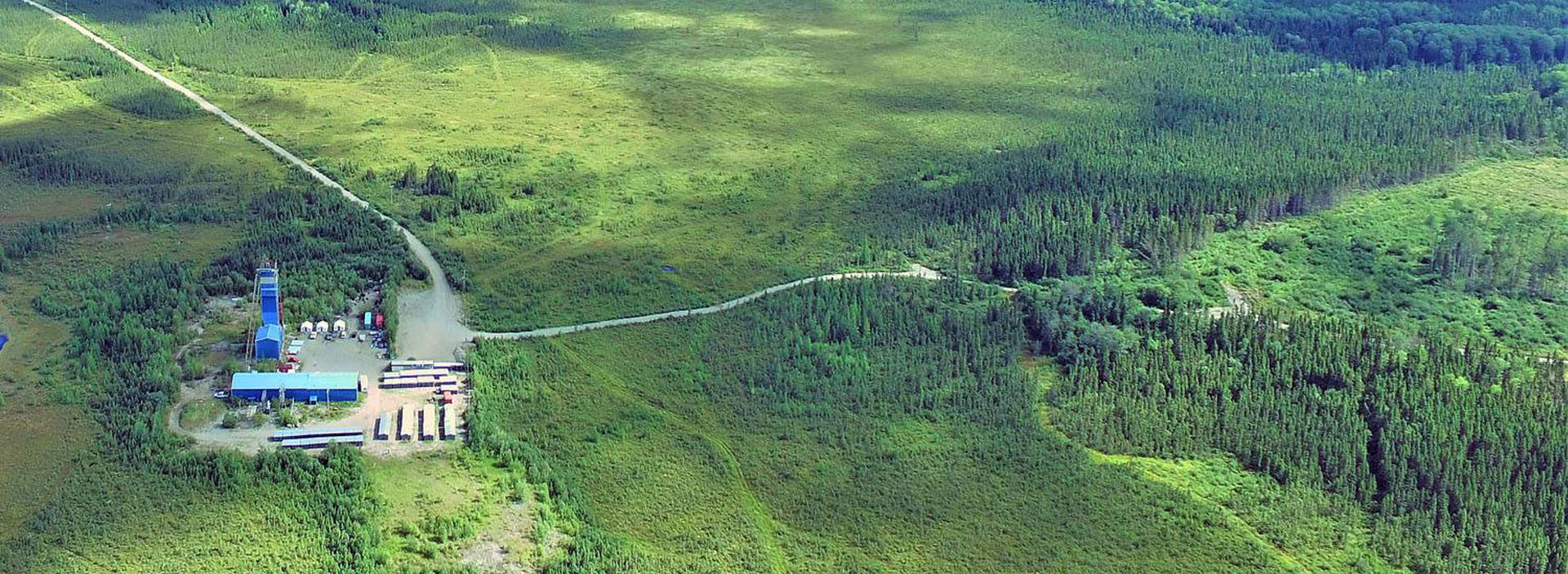Morris Project
Overview & Highlights
- The Company acquired a 100% interest in the 34 Morris Project claims (“Morris”) in July 2021 by paying $5,000 and issuing a 1% NSR royalty.
- The Morris property package more than doubled in size through staking additional claims in January 2022 and was subsequently increased to approximately 70 claims following the acquisition of 11 additional claims in March 2025.
- Data compilation, prospecting, sampling and geophysical survey results have shown evidence of strong hydrothermal alteration and associated conductors typically encountered around volcanogenic massive sulphide (“VMS”) deposits deposits.
Location
Morris is located approximately 30 km east-northeast of the town of Matagami and approximately 110 km north-east from the Douay camp. The property lies within the Matagami mining district, renowned for hosting numerous VMS deposits. The property occurs on the south shore of Lac Olga and can be easily accessed by James Bay road, and secondary gravel roads (Figure 1).
 Figure 1: 100% owned Morris claims with geology and geophysics compilation
Figure 1: 100% owned Morris claims with geology and geophysics compilation
History
Twenty VMS deposits have been discovered in the Matagami mining district since the initial discovery of the Mattagami Lake Mine in 1956. Historical work indicated that the volcanic units hosting the high-grade zinc-copper deposits of the Matagami mining camp are present at Morris.
Recent Exploration Highlights
In 2021, a reconnaissance mapping and sampling program confirmed hydrothermally altered felsic volcanic rocks, followed by geological mapping, a ground IP survey, and a surface pulse EM survey completed in early 2023. In September 2024, follow-up mapping and lithogeochemical sampling refined the alteration zone to guide future drilling.
In Q3 2024, the Company also conducted a lithogeochemical sampling program at its Morris project, targeting the Watson Lake formation, which hosts major VMS deposits in the Matagami mining camp. This program identified highly altered rhyolite zones, highlighting the project’s potential.

